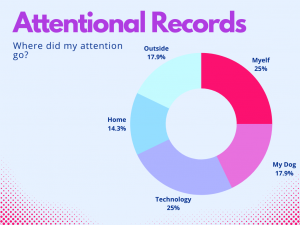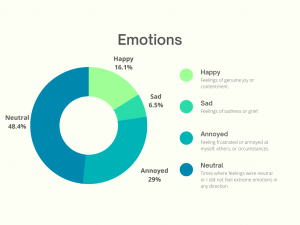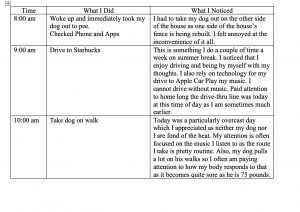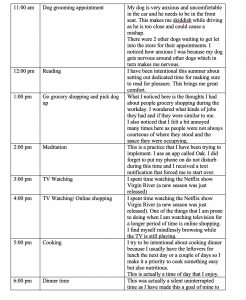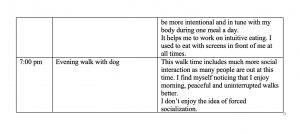Who were these people, and how did each contribute to the development of artificial intelligence? How did each think “intelligence” could be identified?
Alan Matheson Turing was a talented, British mathematician who worked on understanding Nazi code during World War 2. His work led him to make many contributions to computer science and AI. Turing developed the “Turing Test” that worked to differentiate between AI and human (Biography.com Editors, 2014). Turing consistently states that intelligence consists of many forms of imitation (Turing, 1950).
John McCarthy was a mathematician and computer scientist who is famous for actually coining the term “artificial intelligence”. McCarthy also developed many different programming languages, including LISP and Elephant (Brittanica, 2022). In an interview, McCarthy states that “Intelligence is the computational part of the ability to achieve goals in the world” (Stanford University, 2007).
Hebert Simon was an American scientist who worked in the fields of mathematics, statistics, and operational research. Simon believed that computers could be used to examine human problem-solving techniques (Brittanica, 2022). Simon stated that the way in which we learn is by the “influence of other people around” (UBS, 2022).
Marvin Minsky was an American computer scientist. Minsky worked with John McCarthy to found the Artificial Intelligence project, now a laboratory, at MIT. Minsky also built the first neural network simulator which is a computer program that works similarly to the neural network of the brain (Brittanica, 2022). Minsky states that, “intelligence is a product of the interaction of non-intelligent parts” (Wikimedia Foundation, 2022).
Timnit Gebru is an American computer scientist. Her work in AI is focused on ethics and studying the shortcomings of AI technology. Gebru’s research found that AI was consistently less accurate when identifying women and people of colour (Hao, 2020). In an interview with Wired, Gebru states that the ways in which AI is formed, through data, and society, can lead to several biases (Levy, 2021).
How do “machine (programming) languages” differ from human (natural) ones?
Harris defines language as, “a system of spoken, manual, or written symbols that human beings use to express themselves, their identity, imagination, and emotions” whereas programming language is referred to as “logical, precise, [and] perfectly unambiguous” (Harris, 2018). The main difference is that human language allows and accounts for emotions as well as a plethora of non-verbal cues, body language and even tone and volume, whereas programming language is meant to be direct and does not involve reading between the lines (Harris 2018). Essentially human language has the freedom and openness to explore a holistic approach to both verbal and non-verbal forms of communication while programming language is driven by rules and regulations that allow it to work and be universally understood.
How does “machine (artificial) intelligence” differ from the human version?
Firstly, machine intelligence was created and specifically programmed to replicate and mimic human behaviour. Turing’s test to judge the effectiveness of AI’s wanted AI to be able to work so effectively as to actually fool the test into thinking the AI was human (Biography.com Editors, 2014). Essentially, AI would not be in existence if it weren’t for humans being at the basis and forefront of the creation process. “Intelligence lies in the general ability to acquire new skills through learning” while this is a skill that both AI and humans possess as they both can evolve and grow, change, and adapt, AI only does so with the help of programming and systems created by humans. Humans, evolve and adapt through experiences.
How does “machine learning” differ from human learning?
Machine learning and human learning vary greatly as machine learning uses specific technologies to formulate patterns that can respond to various situations and answer questions (Heilweil, 2020). Human learning is more complex. Humans and their needs vary depending on a variety of uncontrollable factors. Their ways of learning are less uniformed and cannot be easily controlled, therefore, biases can come into play. The biases that exist in human learning can ultimately prevail in machine learning as well, “these systems can be biased based on who builds them, how they’re developed, and how they’re ultimately used” (Heilweil, 2020). Because machine learning relies on systems and algorithms that are based on processes created by humans, the same faults and possible setbacks have to be considered.
And for your LAST challenge, a version of the Turing Test: how do YOUR answers to these questions differ from what a machine could generate?
All of my answers and knowledge have been derived from research, whether that be articles that were provided for me to gain knowledge from or through my own personal searching. Online resources that were gained through my own personal searching are extremely similar to information a machine could generate. In this paper, I did not include many examples from my own life as I was making a conscious effort to stick to the scope of the questions and keep my answers concise which in turn can create the belief that an AI could produce this work as there are no personal examples or anecdotes, which and AI would not be able to produce. Also, with the addition of quotations and sources being added to essentially back-up my information and summarize my learning, a machine could be able to organize that information as well. However, many of the questions required me to think about how I also viewed these topics in addition to generating sources and synthesizing information I read, I also needed to process the information I was being exposed to in order to form articulate thoughts to put into writing which is I am not sure an AI is fully capable of utilizing the creativity of language and verbiage to enhance a piece of writing.
References
Biography.com Editors. (2014, April 2). Alan Turing. Biography.com. Retrieved June 3, 2022, from https://www.biography.com/scientist/alan-turing
Britannica, T. Editors of Encyclopaedia (2022). John McCarthy. Encyclopedia Britannica. https://www.britannica.com/biography/John-McCarthy
Britannica, T. Editors of Encyclopaedia (2022). Herbert A. Simon. Encyclopedia Britannica. https://www.britannica.com/biography/Herbert-A-Simon
Chollet, F. (2019, November 5). On the Measure of Intelligence
Dennis, M. Aaron (2022). Marvin Minsky. Encyclopedia Britannica. https://www.britannica.com/biography/Marvin-Lee-Minsky
Hao, K. (2022, January 10). We read the paper that forced Timnit Gebru out of google. here’s what it says. MIT Technology Review. Retrieved June 3, 2022, from https://www.technologyreview.com/2020/12/04/1013294/google-ai-ethics-research-paper-forced-out-timnit-gebru
Harris, A. (2018, November 1). Human languages vs. programming languages. Medium. Retrieved June 3, 2022, from https://medium.com/@anaharris/human-languages-vs-programming-languages-c89410f13252
Heilweil, R. (2020 ). Why algorithms can be racist and sexist. A computer can make a decision faster. That doesn’t make it fair.
Levy, M. G. (2021, November 9). Timnit Gebru Says Artificial Intelligence Needs to Slow Down. Wired. Retrieved June 3, 2022, from https://www.wired.com/story/rewired-2021-timnit-gebru/
Meet the Nobel Laureates in Economics: Do we understand human behaviour (UBS, n.d.).
Simon, H. A. (1995). Artificial intelligence: An empirical science. Artificial Intelligence, 77(1), 95-127. https://doi.org/10.1016/0004-3702(95)00039-H
Stanford University. (2007). Basic questions. Retrieved June 3, 2022, from http://www-formal.stanford.edu/jmc/whatisai/node1.html
Turing, A. M. (1950). Computing machinery and intelligence – inspiring innovation. Retrieved June 3, 2022, from https://www.csee.umbc.edu/courses/471/papers/turing.pdf
Wikimedia Foundation. (2022, January 15). Marvin Minsky. Wikipedia. Retrieved June 3, 2022, from https://en.wikipedia.org/wiki/Marvin_Minsky

